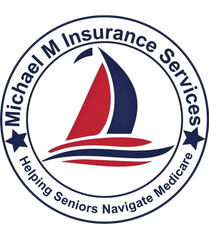Prescription drug costs are one of the biggest concerns for many Medicare beneficiaries. While
Medicare Part D provides prescription drug coverage, the out-of-pocket costs for medications can still add up quickly—especially for high-cost drugs. Fortunately, there are several programs
available that can help reduce these costs and make prescriptions more affordable.
In this blog, we’ll explore the different programs that can help lower your medication costs, including Extra Help, State Pharmaceutical Assistance Programs (SPAPs), Manufacturer Discount Programs, and more.
One of the most well-known and beneficial programs for Medicare beneficiaries is Extra Help. Also known as the Low-Income Subsidy (LIS), Extra Help is a federal program designed to help people with limited income and resources pay for prescription drugs under Medicare Part D
1. Extra Help: Financial Assistance for Prescription Drugs
What Does Extra Help Cover?
- Covers premiums: Extra Help can assist in paying for your Part D premium, reducing your monthly cost.
- Covers deductibles and co-pays: Extra Help can reduce your deductibles and co-pays for prescription medications, making them more affordable.
Eligibility Requirements for Extra Help
- Income: You must have a limited income. In 2025, the income limits for Extra Help are $19,140 for an individual and $25,260 for a married couple living together.
- Resources: You must have limited resources, typically under $15,000 for an individual or $30,000 for a married couple.
- Apply online: You can apply for Extra Help through Social Security online, by phone, or at your local Social Security office.
2. State Pharmaceutical Assistance Programs (SPAPs)
Some states have their own State Pharmaceutical Assistance Programs (SPAPs) that help Medicare beneficiaries pay for prescription drugs. SPAPs are available in certain states and may provide additional assistance for Medicare Part D premiums or co-pays.
What Do SPAPs Cover?
- Premium assistance: SPAPs can help pay for your Medicare Part D premium, making prescription drug plans more affordable.
- Co-pay assistance: SPAPs can also help reduce the out-of-pocket co-pays for prescriptions.
How to Apply for SPAPs
- Eligibility Each state has different eligibility criteria based on income and other factors. Many states require you to be enrolled in Medicare and meet certain income thresholds.
- Contact your state: To apply for SPAPs, visit your state’s official website or contact the State Health Insurance Assistance Program (SHIP) for guidance.
3. Medicare Part D Prescription Drug Plan (PDP) Coverage Comparisons
While this isn’t a program per se, it’s worth mentioning that different Part D plans offer varying levels of coverage, and comparing these options can help you save money.
What to Consider When Comparing Plans:
- Drug formulary: Some plans cover certain medications at a lower cost than others, so reviewing the formulary (list of covered drugs) is important.
- Premiums and co-pays: Plans may have different premium and co-pay structures. It’s worth comparing multiple options to find one that offers the most affordable prescription coverage for your needs.
How to Compare Plans:
- Use the Medicare Plan Finder tool to compare Part D plans, including costs, coverage, and formulary options.
- Consider talking to a Medicare advisor to help guide you through the options.
4. Manufacturer Discount Programs
Many drug manufacturers offer discount programs for specific medications, especially for high-cost drugs like Ozempic and Mounjaro. These programs are often available for people
who don’t have insurance or have high out-of-pocket costs.
What Do Manufacturer Discount Programs Offer?
- Reduced medication costsThese programs can provide discounts on high-cost prescription medications, especially those used for chronic conditions like diabetes or heart disease.
- Free medication for those who qualify: Some programs even offer medications for free to people who meet certain income and eligibility requirements.
How to Apply for Manufacturer Discounts
- Visit the manufacturer’s website: Many pharmaceutical companies have dedicated websites where you can apply for discounts on their drugs.
- Ask your doctor: Your doctor may be aware of discount programs for specific medications and can help you apply.
5. The Low-Income Subsidy for Dual Eligible Beneficiaries
If you’re dual eligible —meaning you qualify for both Medicare and Medicaid —you might be eligible for additional financial assistance with your prescription drugs. Dual eligible beneficiaries
are automatically enrolled in the Part D Extra Help program, which can further reduce the cost of medications.
What is Available to Dual Eligible Beneficiaries?
- Lower premiums, co-pays, and coinsurance: Dual eligible beneficiaries can receive comprehensive prescription drug coverage at little to no cost.
- Full prescription drug coverage: In many cases, dual eligible beneficiaries receive the full benefits of Medicare Part D with minimal or no out-of-pocket expenses.
Final Thoughts: Don’t Let Prescription Costs Hold You Back
The cost of prescription medications doesn’t have to break the bank. Whether it’s through Extra Help, SPAPs, manufacturer discounts, or simply comparing Part D plans, there are several
ways to reduce your out-of-pocket costs and get the medications you need.
If you’re unsure which program is right for you, don’t hesitate to reach out to your Medicare advisor. They can guide you through the process, help you understand your options, and
ensure you’re taking full advantage of any programs that can reduce your costs.

